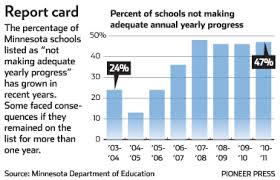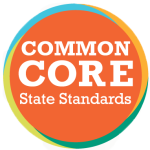From Sputnik to the Common Core
This article is an assignment abstract from Dr. Perry Marker’s Sonoma State University MA EDCT 585 Class
When the Russians successfully put Sputnik into orbit America flipped out. How could the Russians have technologically jumped so far ahead of us? The answer, it was decided, lay in the education. If we the U.S. was going to be able to compete in the space race we had to a better job of teaching science to American students. The federal government poured in billions of dollars and the K-12 education philosophy knee jerked once again.
American K-12 education has always been subject to the ebb and flow of local, state and federal government. Basically, if the conservatives were in power the Essentialist curriculum was in favor; on the other hand if the liberals were in power more progressive programs influenced the schools. Until the turn of the 20th Century the Traditionalist dictated curriculum which held fast to a strict liberal arts program. Students had to learn Latin so they could read the Great Books as they were written – a decidedly Perennialists philosophical point of view.
With the influx of the European immigrants John Dewey’s Progressivism became the standard as a way to educate a large mass of students. This philosophy was more student based as in students should be educated based on student interests. In the 1920s Darwin and Huxley’s influence created the Essentialists movement. All instructional materials had to be science based. The science and humanistic elements stayed pretty much in balance until the Russians put a satellite into orbit.
Once American dominance in space reasserted itself the education pendulum slowly swung back from Essentialism to Progressivism and during the Cultural Revolution of the 1960s and 1970s an even more extreme form of progressive education appeared. K-12 curriculum was being influenced by the “touchy-feely,” of Maxine Green’s Existentialism and John Dewey’s “from inside the child” individualization progressivism. These movements centered on students having some significant say in what they study or how they study or both. Some of these programs, as Nel Noddings noted, included such activities as what she called “continuous progressive programs” like modular scheduling, media-centered education, individualized instruction, behavioral objectives, mastery learning, discovery learning, interdisciplinary studies, and learning centers. (Nodding, 2001, pp.38-39)
About this same time an education theory called Reconceptualism immerged. Its chief proponent is a curriculum theorist named William F. Piner who teaches at the University of British Columbia. He was arguing at the time that since the 1920s the Traditionalist methods of curriculum development was from the inside out – from inside the school system; from inside the classroom; and from inside the student and this was the reason schools were failing to achieve their envisioned objectives.
As mentioned, since the Sputnik science jolt in the 1950s American curriculum had been drifting more and more toward individualistic experimentation stressed curricular choice rather than standardization. When the alarmist “A Nation at Risk” (National Commission on Excellence in Education, 1983) shined a light on the failing U.S. school system and rejolted education, another K-12 curriculum “knee Jerk” was underway. The so called curriculum of “choice,” was to be replaced by the competing ideology of curriculum standardization. This became the ideological foundation of the No Child Left Behind Act of 2002.
The curriculum reform movement of the 1980s saw the “power” of politics in education swing K-12 curriculum toward standardization. Curriculum scholars in the 1980s returned with greater vigor to issues of power than had been evident since the Great Depression. The politics of education and the battles over who controlled what schools teach largely came to overshadow the possibilities unleashed by experimentation.
Pinar, the reconceptualist, was now in business. He argued that “the two other main currents of curriculum thought, perspectives of “traditionalists” and “conceptual-empiricists” (or employers of a “social science” perspective) were inherently incomplete. He thought that traditionalists were immersed in the assumptions of schools and society as they are and that any changes to the existing would have to happen without fundamental alterations to existing institutions and societal arrangements.
Here Pinar gets lost in the weeds. He describes conceptual-empiricists as curriculum scholars who applied the questions and methods of social science to curricular phenomena and he liked the conceptual-empiricist Decker Walker work on “deliberation rather than remaining preoccupied with Traditionalist “prescriptive curriculum theories” and the fact that Walker used anthropological research methods which was closer to reconceptualism rather than “other mainstream conceptual-empiricists.”
But what exactly is reconceptualization? Pinar urged “value-laden,” politicized curriculum theorizing, which he thought more likely to occur through anthropological means than in social science such as “political science or phycology.” And he likes to say the reconceptualism is more about what it is not rather than what it is. He argues that curriculum development needs to be looked through a different lens but offers no insight as to what that lens is. In my mind this position relegates reconceptualization to a rather lazy “should be – but I don’t know what”” concept of curriculum theory.
It is interesting to note that curriculum design is coming back around to the individualistic elements of education. As David J Flinders and Stephen J. Thornton says in their book “The Curriculum Studies Reader,” “Oddly, however, less attention seems to have been devoted to critiquing the premises of standardization with such questions as why uniform outcomes are desirable in the first place and what opportunity cost they entail.” The insistence of a standardized curriculum with uniform outcomes has been routinely criticized particularly concerning what outcomes should be valued and how it should be implemented.
Many of the curricular innovations of the 1980s, which valued a variation of outcomes, came from a diversification of standard curricula that resulted in personal relevance as opposed to the 1990s standards movement and its associated testing platforms that value measurable data over education fulfillment. This concern echoes Marie Montessori’s apprehension about the specialized interests of science versus the social interests of education.
After the No Child Left Behind Act showed little improvement in test scores and graduation rates the Common Core was initiated. It wasn’t another “knee-jerk” as the CCSS is an attempt to the combine the spirit of Progressivism with the Science, Technology, Engineering and Math (STEM) disciplines associated with Essentialism. Because of that Common Core is a look forward rather than a look back. With the Common Core the traditional value of a liberal arts education is being combined with the vocational traits of a STEM-based K-12 education.
Source Materials
Flinders D. J., Thornton S. J., (2013) The Curriculum Studies Reader, Fourth Edition, Routledge, the Taylor & Francis Group
Noddings, Nel. “The False Promise of the Paideia: A Critical View of the Paideia Proposal,” from Journal of Thought, Vol. 18, No. 4, 1983, pp. 81-91
Montessori, Maria, The Advanced Montessori Method; Bentley Publishers




Recent Comments